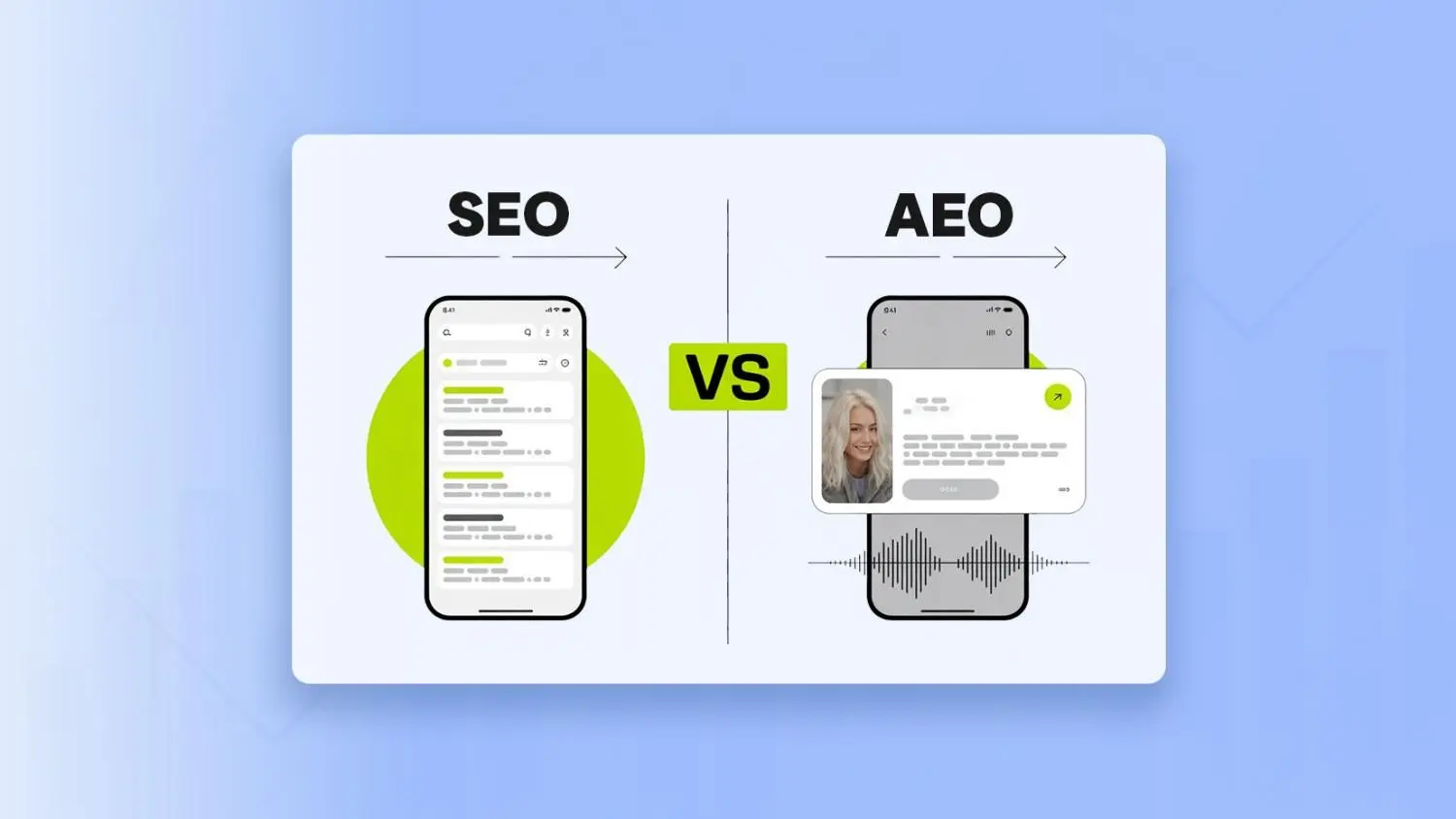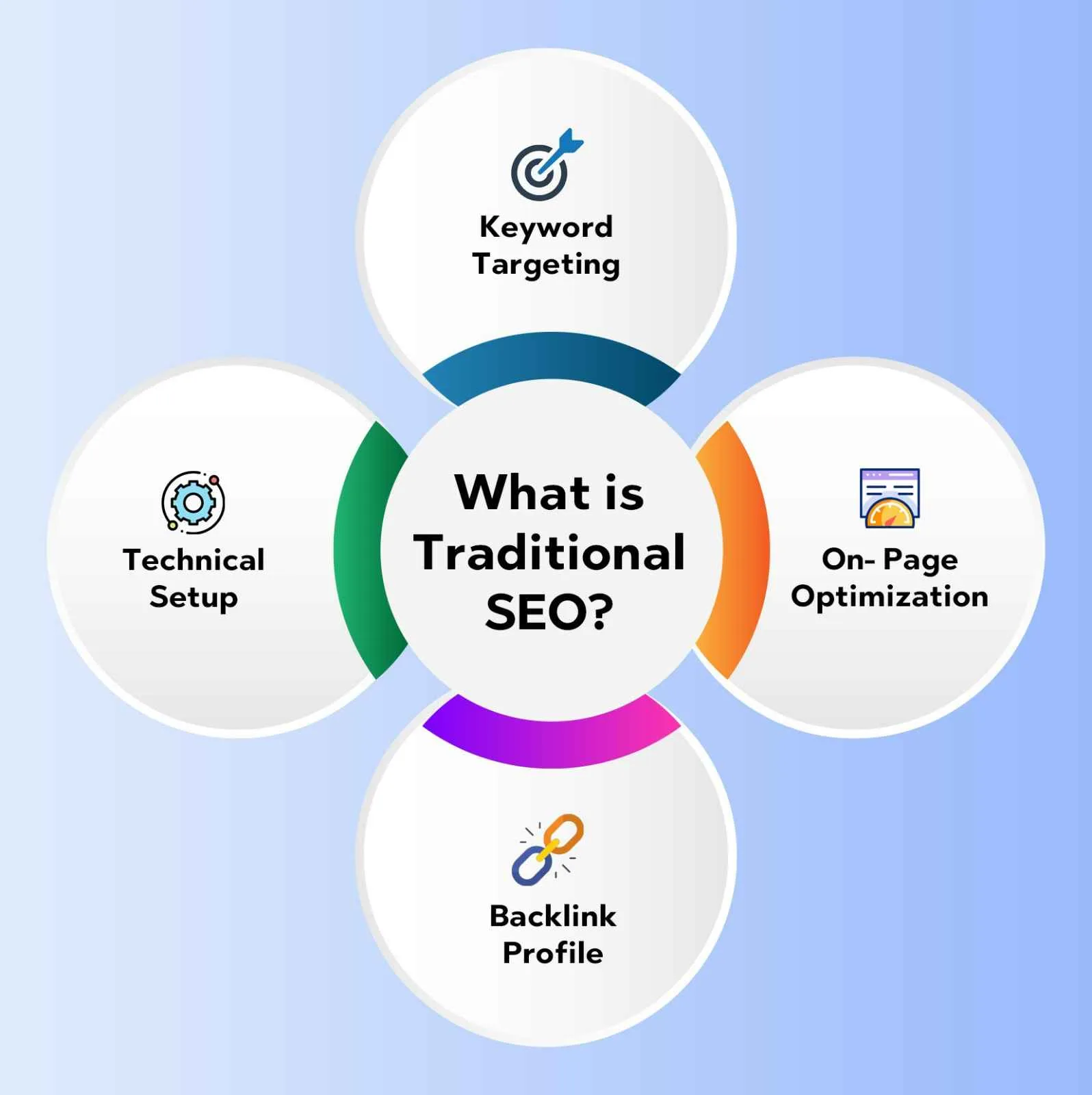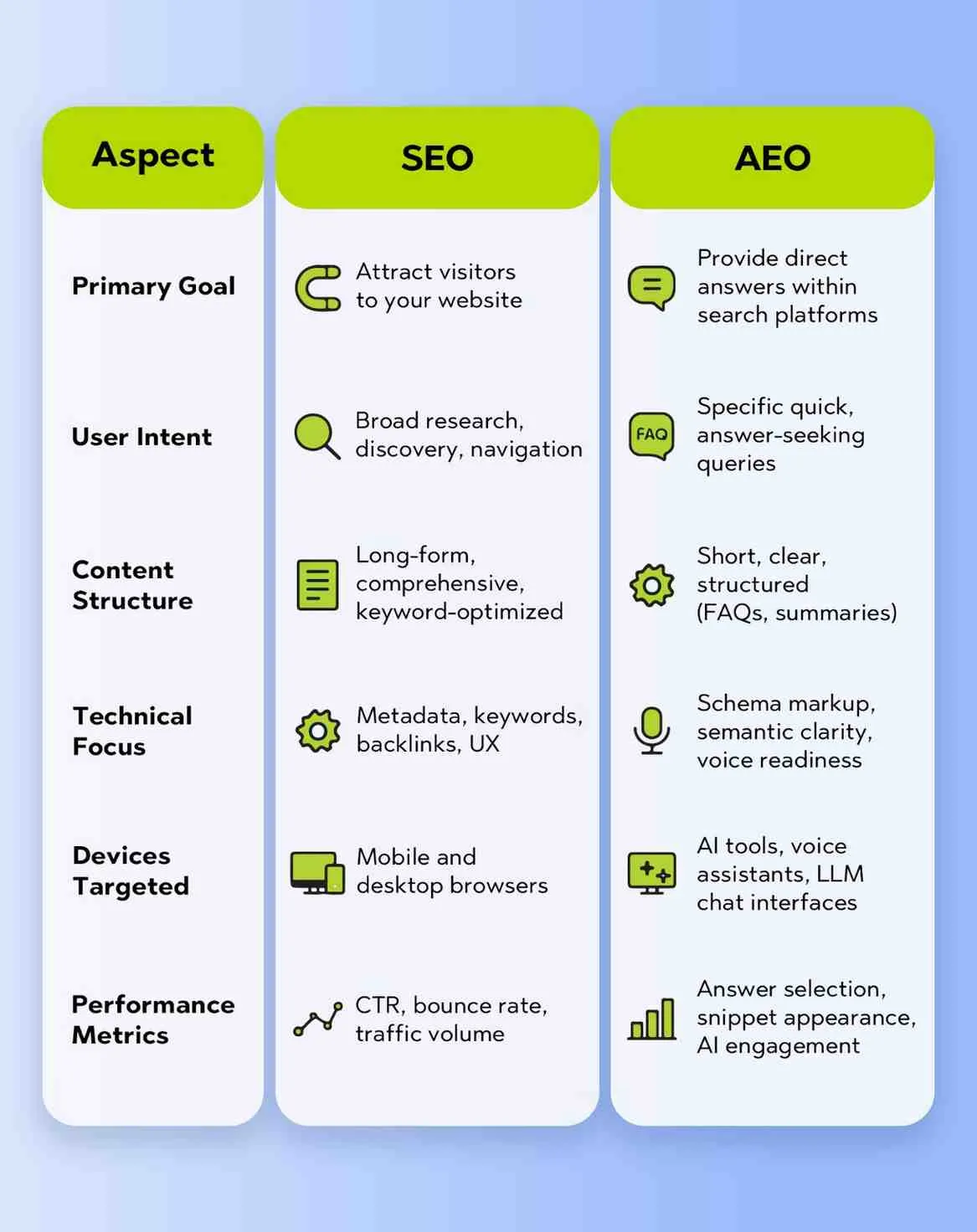Rahul Guleria
SEO Executive

Until a few years ago, SEO was the backbone of digital visibility. Businesses optimized their websites to rank higher on search engines, secure more organic traffic, and build long-term online authority. However, in 2025, the way people search and consume information has dramatically shifted. AI-powered tools like ChatGPT, Gemini, and Perplexity are becoming everyday search platforms for users from all devices.
Today, users often bypass traditional search results in favor of instant answers. Over 65 percent of search queries now result in zero clicks, as AI summaries, snippets, and voice responses offer immediate clarity. For example, if someone searches for “how to spot fake shoes,” they’re unlikely to scroll through a list of blogs. Instead, they expect a straight answer, often served directly on the search results page.
This change is not just technological, but behavioral. The audience no longer tolerates vague introductions or keyword stuffing. They expect content that understands intent and delivers answers quickly. This evolution in expectations is precisely why Answer Engine Optimization (AEO) has entered the spotlight.
Read this blog to learn more about the AEO vs SEO approach.

Search Engine Optimization (SEO) is the process of improving a website’s content, structure, and technical aspects to rank better on search engines like Google and Bing. It aims to attract unpaid, organic traffic by aligning content with search engine algorithms and user intent.
On the hindsight, traditional SEO focuses on the following elements:
These strategies have helped brands attract relevant visitors and build long-term visibility. Despite the rise of AI tools, SEO still accounts for roughly 53 percent of all website traffic and remains a cost-effective channel. It supports deep content discovery, brand trust, and user research; all of which are vital for products or services that require context and consideration.
While SEO has evolved to become more semantic and user-centric, it still heavily depends on traditional search interfaces. And that’s where the contrast with AEO begins to appear.
Answer Engine Optimization (AEO) is the practice of creating content that can be easily Answer Engine Optimization (AEO) is a content strategy focused on creating responses that AI-driven platforms can instantly interpret and present as direct answers. These platforms include ChatGPT, Google’s Featured Snippets and People Also Ask sections, voice assistants, and newer players like Perplexity.
Unlike traditional SEO, which aims to attract users to click on your website, AEO is about providing the answer, even if the user never visits your page.
Search behavior has shifted. People now expect quick, precise answers rather than long lists of links to sift through. This is where answer engines step in and they do not just show options; they select the most relevant and well-structured content and serve it directly. That means clarity, structure, and intent alignment take priority over keyword stuffing or backlink counts.
Let’s break down how to actually optimize for answer engines:
1. Intent clarity:
Understanding exactly what the user wants to know. For example, if someone asks, “What’s the safest investment in 2025?”, the content must deliver a straightforward, specific answer within the first few lines. This isn’t the place for intros or brand talk; the answer must lead.
2. Content format matters:
Structured content like FAQs, Q&A blocks, clear subheadings, and summary sections help AI engines pick up answers more efficiently. Schema markup is another critical element. It acts like a label that helps search engines and AI platforms interpret the purpose and context of your content. Pages that use schema markup correctly enjoy nearly 42 percent more citations compared to those that don’t, which directly influences visibility across AI interfaces.
3. Tonality:
AEO also leans heavily on natural, conversational language. AI tools are trained on how humans speak and ask questions, so content must mirror that. Overuse of jargon or overly technical explanations may lower your chances of being selected by an AI engine as the best answer.
One more important thing to note -
If you are still pondering on the argument of SEO vs answer engine optimization, here’s the deal. SEO is where performance is judged largely by traffic and rankings. Whereas AEO performance is more about positioning and selection. And that visibility is proving valuable. Studies show that AI referrals often lead to 12 to 18 percent higher conversion rates compared to traditional sources.

SEO and AEO share a common goal: visibility. But consequently the approach, content structure, and performance indicators vary significantly. To decide which to prioritize or how to balance both, you need to understand where they diverge.
Below is a clear breakdown of the difference between AEO and SEO:
Aspect | SEO | AEO |
|---|---|---|
Primary Goal | Attract visitors to your website | Provide direct answers within search platforms |
User Intent | Broad — research, discovery, navigation | Specific — quick, answer-seeking queries |
Content Structure | Long-form, comprehensive, keyword-optimized | Short, clear, structured (FAQs, summaries) |
Technical Focus | Metadata, keywords, backlinks, UX | Schema markup, semantic clarity, voice readiness |
Devices Targeted | Mobile and desktop browsers | AI tools, voice assistants, LLM chat interfaces |
Visibility Zones | Traditional SERPs (Search Engine Results Pages) | Featured snippets, People Also Ask, AI summaries |
Performance Metrics | CTR, bounce rate, traffic volume | Answer selection, snippet appearance, AI engagement |
These differences are not a matter of better or worse. Instead, they serve different types of content consumption.
Traditional SEO works best when users are exploring: comparing options, reading detailed product reviews, or learning about new topics. In contrast, AEO shines when users are in “ask mode” looking for definitions, instructions, recommendations, or quick facts.
By understanding the differences between AEO strategy vs SEO strategy, you can start to craft a dual-strategy content approach; using SEO to inform and engage and AEO to answer and assist.
The overall visibility spectrum is now facing the dilemma of what to prioritise first.
But the real question is: how much of each does your content strategy need?
Every campaign, project timeline has unique client expectations, involved teams have their own philosophy behind their workflows. However all is but a wordplay in front of a search engine’s algorithms!
The rise of AI-first search behavior is changing the game. Here's what that looks like:
So, what does this mean for you?
These industries rely heavily on trust, research, and long-form comparisons. Stick to SEO as your foundation.
Your users are still reading. Still comparing. Still exploring.
Think questions like:
Here, people want instant, reliable answers. That’s AEO territory.
If you’re not structured for AI or voice assistants, someone else’s content will get picked.
Split your content priorities like this:
The most effective digital strategies in 2025 do not treat SEO and AEO as separate systems — they integrate both into one intelligent, intent-focused content framework. SEO continues to be the engine of organic discovery. It helps establish brand authority, builds long-term visibility, and brings in users who are ready to explore, compare, and convert.
AEO, on the other hand, acts as the new gateway. It puts your brand in front of AI tools, voice search users, and those seeking immediate clarity. It improves visibility in zero-click environments, where many of today’s digital touchpoints begin.
Brands that do both well are not just present in searches, they are the answer to a user’s purchase decisions.
SEO focuses on improving website rankings to drive traffic through traditional search engines. AEO is about structuring content so AI tools, snippets, and voice assistants can deliver direct, immediate answers without needing users to click through.
No, AEO is not replacing SEO. Instead, it complements it by serving users who expect instant answers from AI-driven platforms. SEO is still essential for building authority, ranking long-form content, and supporting discovery through deeper search experiences.
In 2025, you should focus on both. Use SEO to build depth and organic visibility, and use AEO to capture attention in zero-click, AI-driven environments. A balanced approach ensures broader reach across traditional search and emerging answer engines.
Yes, AEO and SEO can work really well together. You can structure SEO-optimized pages to include clear answers, summaries, and schema markup. This allows your content to rank traditionally while also being featured in AI snippets and voice results.